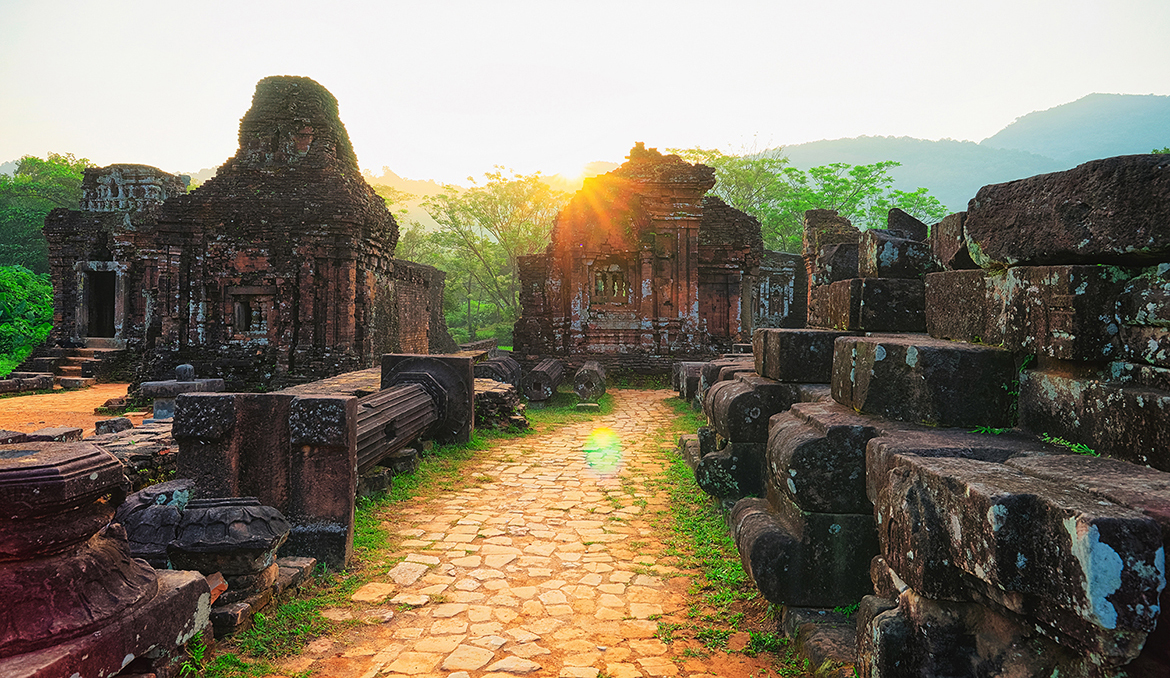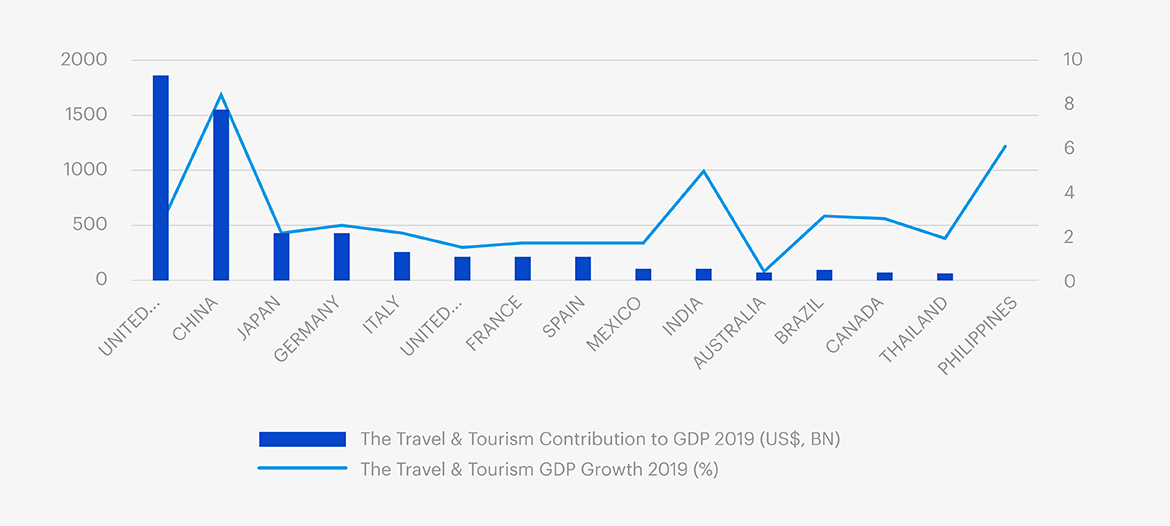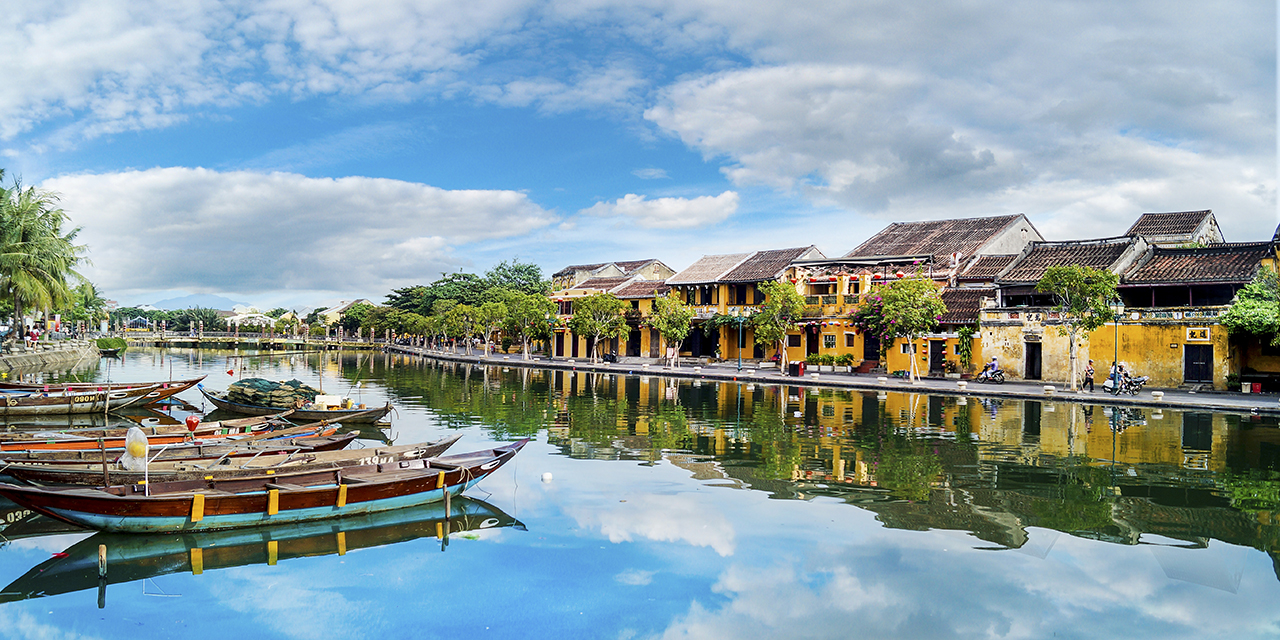Tourism plays an important role at all levels, from global to national and to the local areas, so the question is how to continue to regenerate & preserve the natural environment or long-standing cultural values when developing tourism? The answer is “the principle of sustainable development.”
Sustainable development trends
Tourism is one of the largest industries, constantly developing and affecting the growth of the whole economic, social and cultural sectors. This can be seen through statistics on the number of trips made each year before COVID-19 appeared to have surpassed the world population. In 2019, the number of international tourists exceeded 1.5 billion and is expected to reach 1.8 billion by 2030.
However, as tourism develops, it has the potential to threaten living habitats, disturb wildlife, affect water quality, and threaten local communities due to over-development, which can easily disrupt local cultural values. Therefore, countries and regions need to plan carefully in the direction of sustainable tourism to bring benefits to local communities, respect local culture, preserve natural resources, and direct benefits are brought to local communities.
Sustainable tourism seeks to maintain the quantity, quality, and productivity of both natural and human resource systems over time while respecting and adapting to the dynamics of that system. According to the United Nations World Tourism Organization, sustainable tourism is tourism that meets the needs of current and receiving regions while protecting and enhancing opportunities for the future. The goal is to maintain the economic and social advantages of tourism development while minimizing any unintended impacts on the natural, historical and socio-cultural environment in the relevant area.
In a recent 2020 study by Booking.com, surveyed 29,000 travelers across 30 countries, including Vietnam, the commitment to sustainability in daily life of travelers was also consistent with their intentions for later trips. Accordingly, 100% of Vietnamese tourists responded that, in the coming year, they want to stay in places committed to sustainable tourism; 88% of Vietnamese tourists want to reduce synthetic waste, 86% want to reduce energy consumption; 81% want to use more environmentally friendly transport such as walking, cycling or public transport instead of taxis or renting a car; 84% of Vietnamese tourists want to have authentic experiences with indigenous cultural characteristics; 93% believe that raising cultural awareness as well as preserving heritage. (3)
Main factors of sustainable tourism development
The principle of sustainable development in tourism establishes the right balance between environmental, economic and socio-cultural aspects, playing an important role in the conservation of biodiversity. In the process of operation, sustainability is shown towards minimizing the impact on the local environment and culture, while contributing to the creation of income, employment and conservation of ecosystems at such communities.
At the same time, sustainable tourism provides important economic incentives to protect habitats. Revenue from visitors is often transferred back to nature conservation programs or capacity building for local communities to manage protected areas. Furthermore, tourism can be an important vehicle in raising awareness and promoting positive behavioral change towards biodiversity conservation among the millions of people who travel globally each year. However, building a sustainable tourism industry is still the goal of many countries, especially in developing countries where the current level is mainly mass tourism.
How does sustainable travel differ from mass travel?
Mass tourism is often aimed solely at the profitability of the organizer, with no goal for improving conservation work or benefiting local communities and possibly rapidly destroying sensitive environments. For example, for waters that need to be preserved, mass tourism there can have adverse effects due to the lack of effective planning and management. Years of exploitation can destroy or unrecognizably alter the benefits and cultures on which these mass travel itself depends on. Mass tourism does not provide funding for both conservation programs and local communities to protect the region from activities and development that could harm the region’s natural beauty. Opportunities and threats to the environment and socio-culture can only be driven through carefully established and managed plans of sustainable tourism.
Sustainable tourism is planned for multiple purposes: income, environment and community from the start, in order to benefit the local community, respect culture, conserve natural resources, guide visitors and the local community. In this plan, there is usually the participation of stakeholders, towards the locality where visitors will go. Stakeholders include local community members, authorities, non-governmental organization as well as the tourism industry, visitors and many other groups. All need to work together to create sustainable tourism business organizations that deliver local and economically viable benefits. In particular, natural resources and cultural values of the region will be protected to minimize the adverse impacts of tourism, while also contributing to the conservation and health of the community both economically and socially.

Friendly, environmental protection
Travel has a special, two-way relationship with the environment. The quality of the environment is essential to the success of tourism, as this is often the factor that attracts people to visit a place and convinces them to return. Therefore, the principle of sustainable tourism is to minimize the impacts on the environment (flora and fauna, habitats, living resources, energy use and pollution,…) while having impacts that contribute to increasing biodiversity, preserving landscapes,… through regional management, conservation and upgrading of heritage, reducing pollution caused by waste, strengthening the study of scientific solutions to protect the environment.

In Europe, where tourism is the third largest economic sector with a workforce of 17 million and contributing nearly 10% of the EU’s gross domestic product, the European Environment Agency has developed a reporting mechanism on tourism and environmental relations, with the European Tourism Index System for Sustainable Destination Management (ETIS), developed as part of EU action to promote sustainable tourism.
According to the Global Tourism Competitiveness Report 2017, many indicators related to Vietnam’s environment reached low levels such as environmental sustainability level ranked 129/136, waste level 128/136, deforestation 103/136, restrictions on wastewater treatment grade 107/136, …) (1). Currently, in 2021, Vietnam is implementing many models and initiatives to raise awareness about environmental protection in tourism activities. In particular, an important innovation step is to attach the responsibility of local authorities in improving the tourism environment; develop programs to propagate and educate the community’s behavior towards tourists and protect tourism environmental resources; application of green technology, clean technology in hotels and tourist areas.
Typical examples can be mentioned the waters of Cu Lao Cham, Tan Hiep commune, Hoi An city, Quang Nam province. With an area of about 15 km2, Cu Lao Cham is not only a place to preserve many rare species of flora and fauna, but also a historical cultural relic associated with the development of the former Hoi An port. After 10 years of conservation and development, the ecosystem of Cu Lao Cham World Biosphere Reserve has been restored relatively intact and become an attractive destination on the tourism map of Quang Nam and the central region of our country. 2019 marks 10 years since Cu Lao Cham was officially recognized by UNESCO as a World Biosphere Reserve.

Preserving and enhancing socio-cultural values
Sustainable tourism does not harm the social or cultural structures of the community but is a catalyst for enhancing local cultural values and traditions. Sustainable tourism encourages stakeholders (individuals, communities, travel companies, and government management) to participate in all stages of planning, development and supervision, educating stakeholders about their roles. Full participation will ensure a fair distribution of travel benefits and costs to each party.
Tourism development has led to the expansion of cultural and economic exchanges between regions, regions and internationally, contributing to traditional education, knowledge training and training, physical and mental training for all classes of the population.
The tourism business helps to create sources of funding to preserve, enhance value and restore architectural, artistic, physical and intangible heritage, culture, handicrafts, costumes, traditional customs,… However, there are many challenges in preserving the heritage. For example, the distinctive culture of ethnic minorities is susceptible to transformation due to exposure to unfamiliar cultures, due to the tendency to marketize cultural activities, due to conflicts arising when developing tourism or due to lifestyle contrasts. Or cultural, historical and archaeological heritages often built with terracotta materials such as My Son – Quang Nam monuments are difficult to preserve intact due to the impact of the monsoon tropical climate in Vietnam. Therefore, the need to preserve sustainable heritage is becoming more urgent.

Economic development
Sustainable tourism contributes economically to the community and creates a large number of stable jobs for localities as well as a lot of stakeholders. The implementation of a diversified tourism business will not be allowed to destroy natural, cultural and economic resources but can enhance the conservation of natural resources, appreciate cultural values and bring income to the community as well as to the organizing enterprises themselves.
It can be seen that sustainable tourism development brings many great benefits such as contributing to economic growth (economic restructuring, on-site exports); creating more jobs and increasing income for a part of the local community; contributing to improving the conditions of infrastructure and social services for localities (health, information, entertainment),…
The image below shows the tourism industry in the 10 countries with the highest share of GDP in 2019, up to nearly 10% for the US and more than 8% for China – the leading countries in sustainable tourism development. (2)


Tourism development has contributed to increasing the proportion of the tourism industry in the service sector. Where tourism develops, where the urban and rural appearance is more ornate, cleaner, people’s life is significantly improved such as Sa Pa (Lao Cai), Ha Long (Quang Ninh), Cat Ba (Hai Phong), Sam Son (Thanh Hoa), Cua Lo (Nghe An), Hue (Thua Thien-Hue), Da Nang, Hoi An (Quang Nam), Nha Trang (Khanh Hoa), Mui Ne (Phan Thiet), Mekong Delta region and many other localities. Trade, agriculture, fisheries, transportation, construction, telecommunications,… Thanks to the development of tourism, over the past years, there has been more motivation for development, contributing to changing the appearance of Vietnam’s socio-economic economy.
In short, sustainable tourism is a continuous process that requires constant monitoring of its impacts, in order to harmoniously meet all three criteria:
- Optimal use of environmental resources is key to tourism development, thereby maintaining ecological processes and helping to preserve diversity and natural heritage.
- Respect the socio-cultural authenticity of local communities, in order to preserve their cultural heritage and traditional values, to understand and preserve differences between cultures.
- Ensuring long-term, viable economic activities, aimed at providing equitable socio-economic benefits to all stakeholders, including employment and income opportunities as well as social services to local communities (UNEP, 2006).
Reference sources:
(1) Vietnamtourism. 2020 High visitor growth rate, making an important contribution to socio-economic development
(2) Visualcapitalist. 2020 Visualizing the Countries Most Reliant on Tourism
(3) Booking.com Annual Report on Sustainable Tourism





